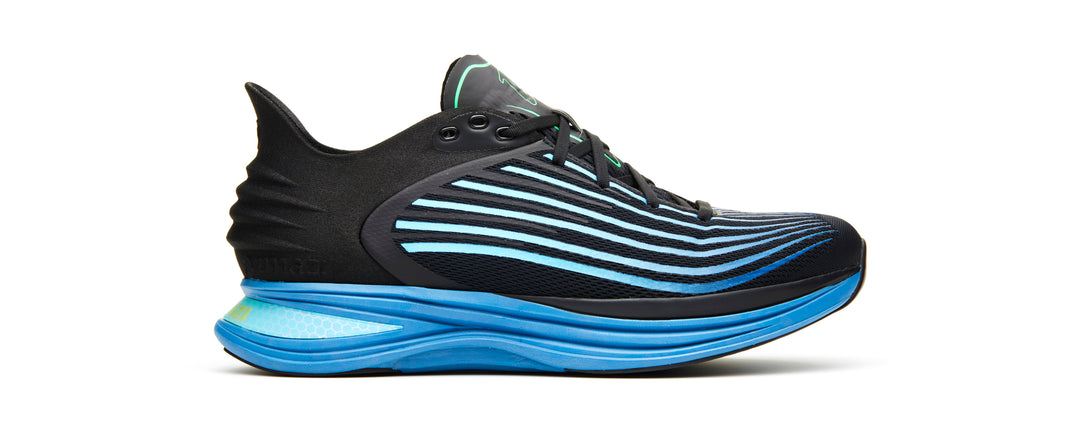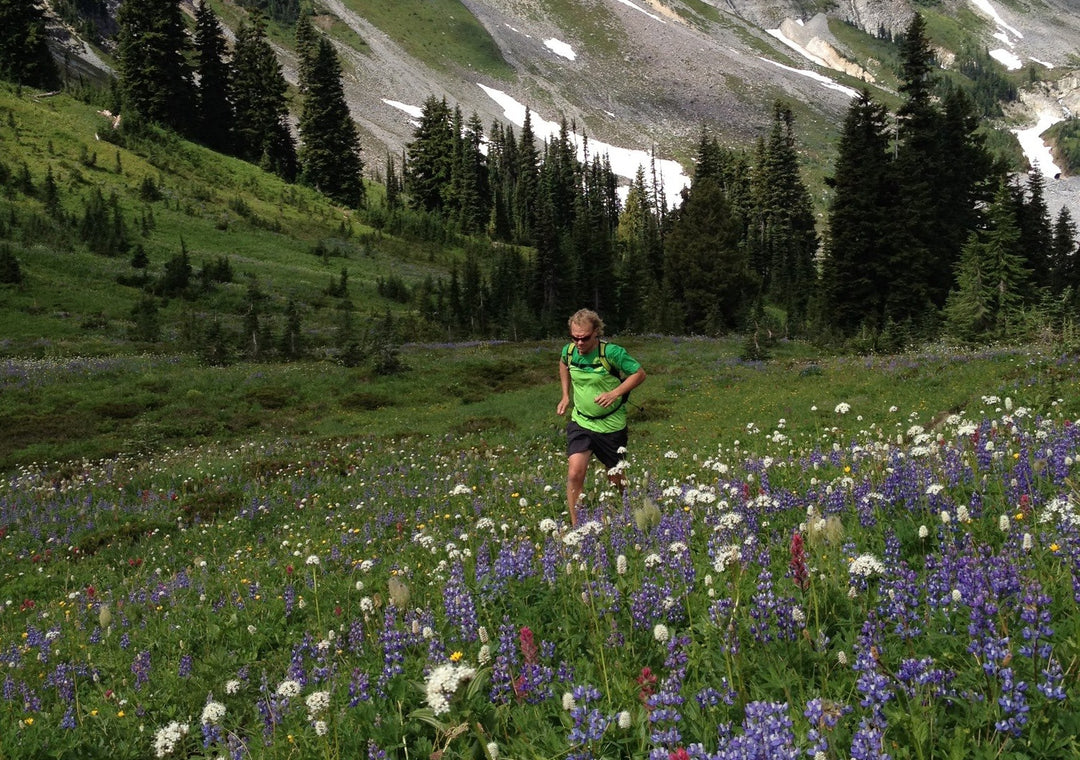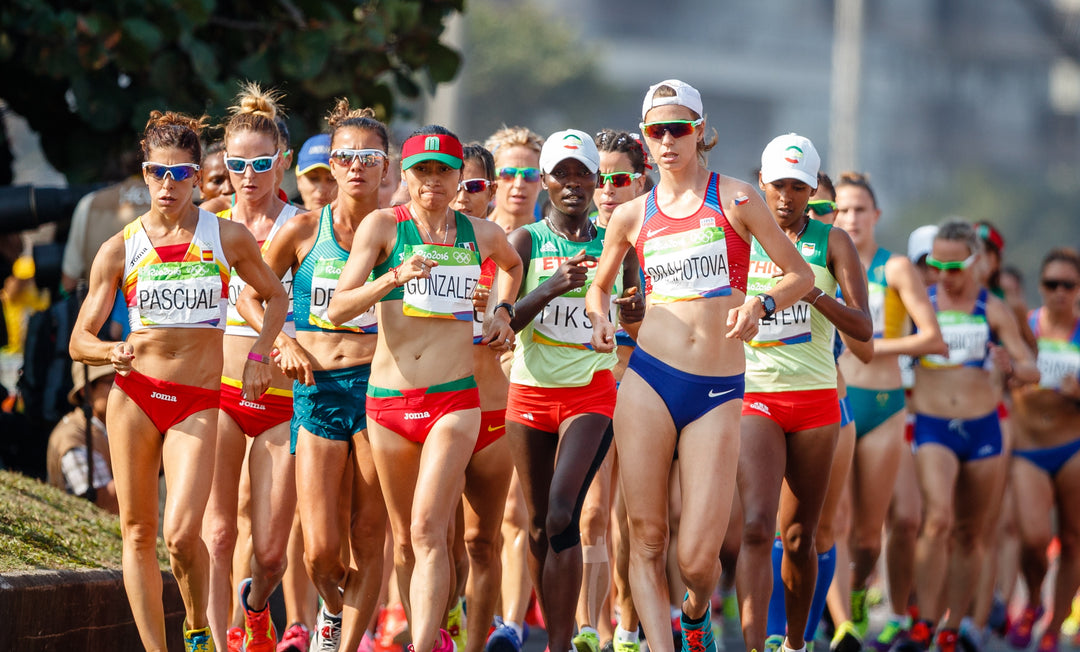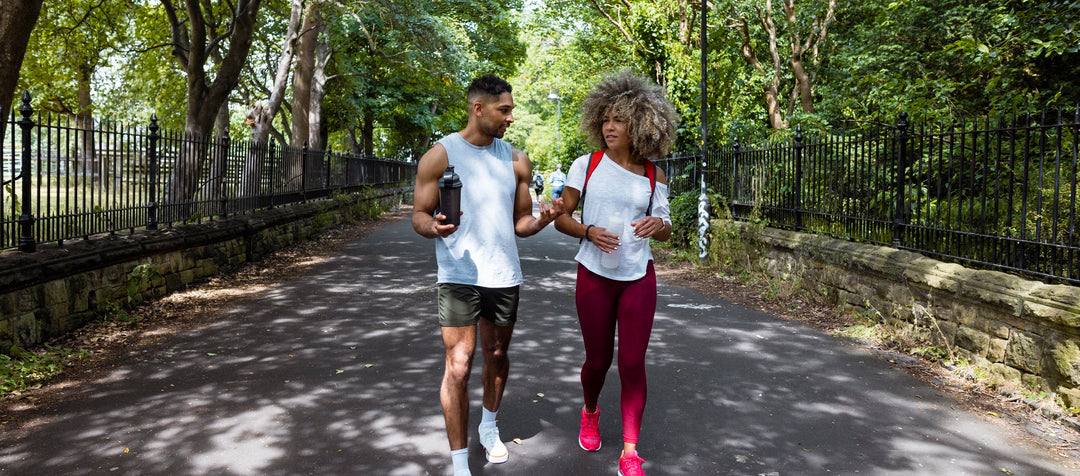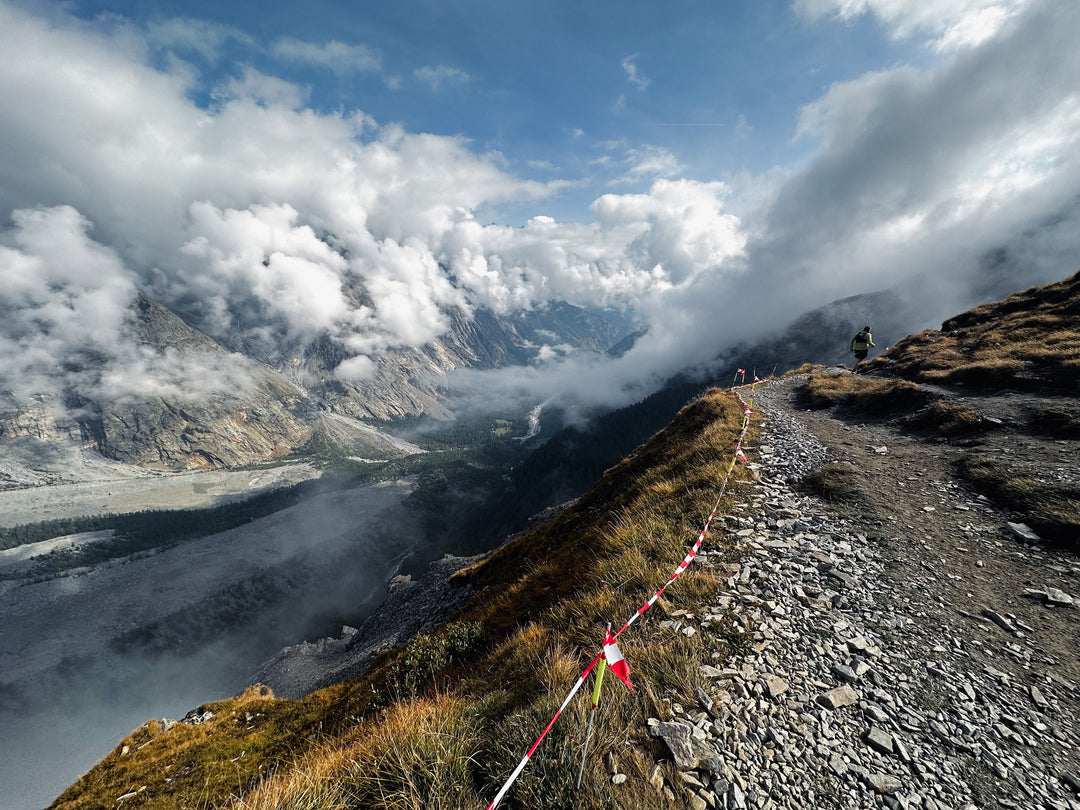Since the advent of running shoes, lots of attention has been focused on cushioning. And for good reason! Most runners want the comfort and protection that cushioning provides.
More recently, max cushioned shoes have become maximally popular. The thinking goes like this: If a little cushioning is good, then a lot more must be better. Despite the fact that “more” isn’t always a good thing, maximally cushioned shoes seem to be here to stay. At least for awhile.
Max cushioned running shoes, sometimes called maximalist shoes, have extremely thick and slightly wider midsoles. The midsole foam in these shoes varies but is often described as soft, plush, cushiony, specifically with regard to the impact phase of a runner’s stride.
If you’re thinking about a max cushioned shoe, we have two questions.
First, ask yourself this. Max cushioned for who? Is it cushioned for a 120 pound runner? Or someone who weighs 195 pounds? Is it made for someone running 5-minute miles? 8-minute miles? 14-minute miles? It turns out that impact forces change dramatically depending on pace and runner weight, and, according to physics, it’s not possible for a single max cushioned shoe to provide ideal cushioning for that wide range of forces.
Unfortunately, this means that the max cushioned shoe you’re running in is almost certainly “max cushioned” for some other runner. Rather than max cushioning, what you really want is optimal cushioning for the way you run. Now we’re getting somewhere. Given the physics of running, the only way to optimize cushioning is to tune the midsole of a shoe to respond to the specific forces of a given pace zone. Vimazi tunes shoes by pace zone to optimize cushioning for every runner. Check.
Now for the second max cushioned shoe question. Does it help my push-off efficiency? While running, your forefoot and toes account for nearly all your propulsion power. But if your midsole is soft, plush, and super cushiony (hello max cushioned shoe), it probably functions about as well as memory foam during the propulsion phase of your stride. Maybe we need to add “sluggish” the to attributes of a max cushion shoe.
Here’s the conundrum. Not only are the impact and push-off forces different from each other, their functions are completely different. Runners want one thing during impact (cushioning) and a different thing altogether during push-off (propulsion efficiency). One foam can’t do it all.
So is it possible to get both the best cushioning and max propulsion efficiency? Yes! The heel of your midsole needs to be tuned differently from the forefoot. That’s why we adjust foam density in the heel and midfoot to account for impact force and then separately adjust foam density in the forefoot to react to push-off force. Both adjustments are based on pace, and that’s what we call tuning.
Bottom line: We’re fans of cushioning. Just make sure the cushioning you get is optimized for the pace you run and doesn’t slow you down during your push off.
More About Vimazi
Here’s what Vimazi does
We make pace-tuned running shoes that provide better cushioning and more efficiency than previous generations of running shoes.
The physics of pace-tuned shoes
Back in 2017, while Vimazi CEO Scott Tucker was running to his 6am interval workout, he had an idea. A shoe made for a specific pace, he thought, might offer better cushioning and more propulsive efficiency than a generic shoe that wasn’t “tuned” for a particular pace.
It took three years to fully understand the physics of human running, and the forces that are generated. When we finally understood the physics, we built an equation that defines running forces. We’re now able to calculate the exact impact force and propulsion force, in Newtons, for any pace, including variations for height, weight, and cadence. (A Newton is a metric unit of force.) Data from the Forces in Running study we conducted aligned with the force calculations we got from the physics. In other words, we know it works.
Knowing the precise impact and propulsion forces at each pace, allowed us to create shoe models for different pace zones. So our pace-tuned technology is based on pure physics. No hand waving, no conjecture, no correlative studies, no self-reported data sets, no marketing fluff. We started with the physics of human running, and it led us to pace-tuned shoes.
The problem with previous gen running shoes
Most running shoes have the same foam density from heel to toe, and they’re sold to runners of every pace. The trouble is that midsole foam can’t respond correctly to the forces at all paces, and it can’t even respond appropriately to the differences between impact and propulsion forces. To make sure you get all the cushioning you want as well as all the efficiency you deserve, you need a shoe that’s made for a specific pace zone and tuned differently in the heel than the forefoot.
The Vimazi solution
Our solution to this running shoe problem was to create something that's never been done before—pace-tuned running shoes. In 2023, after years of testing, we launched seven road shoe models that span paces from 4:30 minutes per mile to 15 minutes per mile (2:50-9:30 minutes per kilometer). By making a shoe for a specific pace zone, we’ve been able to deliver better impact cushioning and propulsion efficiency for every runner.
25 years experience
We’ve taken everything we learned making running shoes for 25 years—and running marathons for even longer—and elevated it to a whole new level with pace tuning. It offers a better and more personal running experience. We were instrumental in creating shoes for Montrail, Scott Sports, and Pearl Izumi. We learned even more while owning a specialty running store and organizing running events.
A marathoner’s fit
Running shoes can have the best tech, but if they don’t fit well, nobody will wear them. We wouldn’t either! Not only have we spent our careers perfecting innovative fit technologies at other companies, notably at Montrail, we’re also life-long marathon runners ourselves. So we understand fit and know how critical it is, from heel to toe. Each of our models has been painstakingly designed and built with the perfect fit in mind. They’ve also been extensively road tested since 2019, including at the Boston, London, Portland, Missoula, San Antonio, and Two Oceans Marathons. We think you’ll love them.





